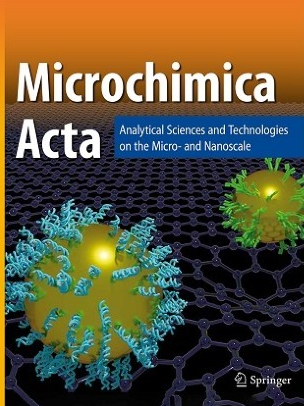A novel photoelectrochemical strategy for ultrasensitive and simultaneous detection of 5-methylcytosine and N6-methyladenosine based on proximity binding-triggered assembly MNAzyme -mediated HRCA
Abstract
The preparation of UiO-66@CdTe@AuNPs composites is presented for the first time, which function as a photoelectrochemical (PEC) sensing matrix and are conjugated to a three-way junction (TWJ). We propose an antibody-based specific recognition-induced neighbor-joining reaction that initiates the assembly of two molecularly designed nucleic acid enzymes (MNAzymes), to release an oligonucleotide that hydrolyzes TWJ through the mechanism of a toehold-mediated strand displacement reaction (TSDR). Subsequently, a hybridization chain reaction application (HRCA)-based dendrimer is formed, which immobilizes a large number of quantum dots to generate a burst effect that reduces the photocurrent signal. As anticipated, the developed PEC biosensor showed excellent analytical performance for both m6A-RNA and m5C-RNA, with detection limits of 0.309 fM and 6.918 aM, respectively. The successful fabrication of this ultrasensitive and simultaneous PEC biosensor provides new insights for epigenetic research and the bioassay, mechanism investigation and clinical diagnosis of diseases associated with RNA methylation.
Graphical Abstract

 求助内容:
求助内容: 应助结果提醒方式:
应助结果提醒方式:


